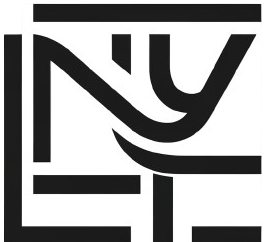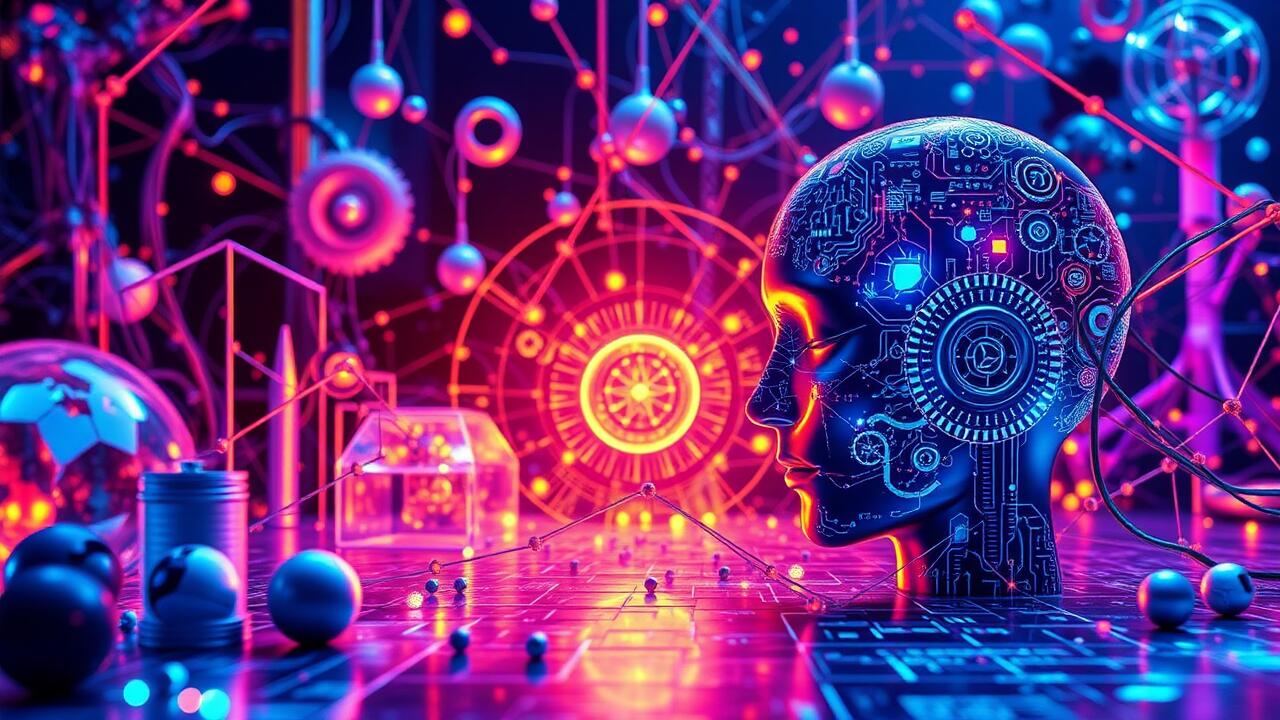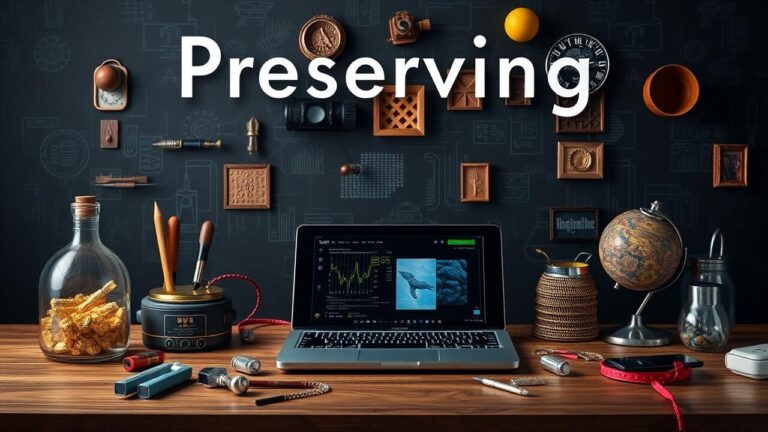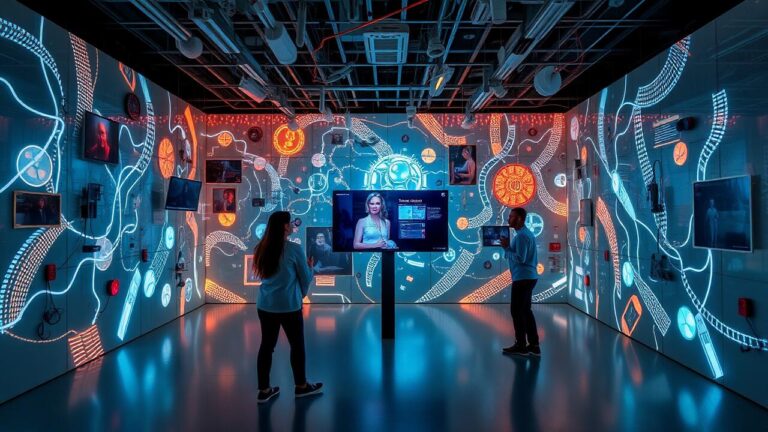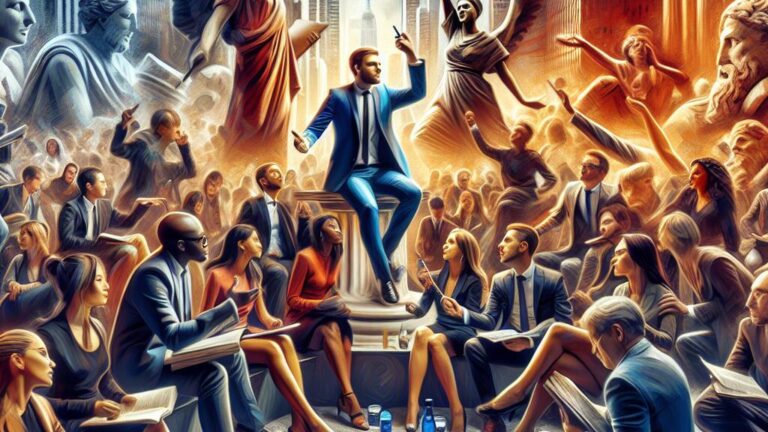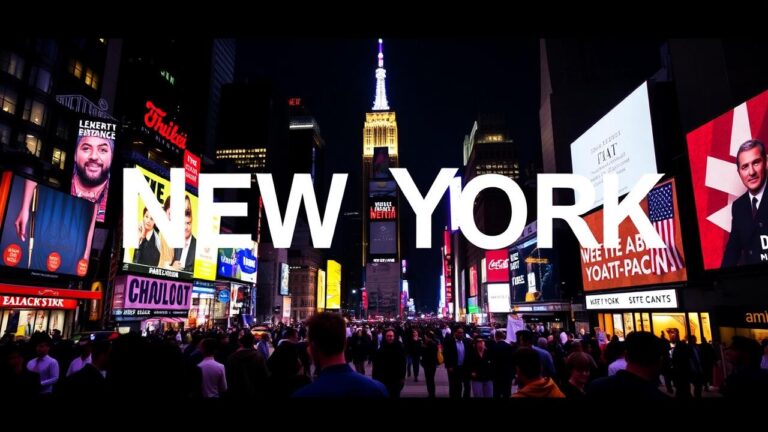The Role of Artificial Intelligence in Creating Digital Art
Table Of Contents
The Role of Artificial Intelligence in Creating Digital Art and Its Impact on Art and Artificial Intelligence
Key Takeaways
- Comprehending AI’s Function in the Creative Sphere
- The Influence of AI on Digital Artwork Production
- AI-Crafted Art: An Emerging Domain
- The Contribution of AI in Forming Digital Creations
- Moral Aspects in AI-Produced Art
Understanding Artificial Intelligence in the Art World
Artificial intelligence in art is reshaping the landscape of creativity, particularly in the realm of digital art. The Role of Artificial Intelligence in Creating Digital Art highlights how generative artificial intelligence enables artists to explore new dimensions in their work. AI technology enhances the capabilities of digital illustrations and paintings, producing stunning ai-generated images that captivate audiences. Artists increasingly collaborate with AI to push the boundaries of their creativity, resulting in innovative virtual art that merges human intuition with machine learning. This integration of artificial intelligence not only transforms traditional artistic practices but also gives rise to a new genre of ai art that challenges conventional understandings of authorship and artistic expression.
Definition of Artificial Intelligence
Artificial Intelligence encompasses a range of technologies designed to simulate human intelligence. It operates through artificial neural networks, which mimic the way human brains process information. This innovation has significant implications for the creative arts, especially as digital natives increasingly engage with AI-generated content. The Role of Artificial Intelligence in Creating Digital Art is pivotal, allowing artists to produce works of art that combine traditional techniques with modern technology. By enhancing computational creativity, AI transforms the artistic landscape, giving rise to novel forms of visual art and concept art.
AI-generated art objects represent a fusion of human creativity and machine learning. Tools developed for this purpose enable artists to explore new dimensions of artistic expression, leading to unique ai-based creations. These works often push boundaries, challenging the conventional understanding of art. As artists embrace AI, they expand the possibilities of what constitutes a work of art, positioning AI as a collaborator in their creative journey. The Role of Artificial Intelligence in Creating Digital Art continues to evolve, reshaping how art is conceived and appreciated.
- AI technologies include machine learning, deep learning, and neural networks.
- Artists use AI to enhance creativity and generate unique artwork.
- AI-generated art can blend various artistic styles and techniques.
- The collaboration between artists and AI opens new avenues for exploring themes and concepts.
- AI tools can analyze vast datasets, inspiring artists with innovative ideas.
- The rise of AI art challenges traditional definitions of authorship and originality.
- As technology advances, the integration of AI in art is likely to grow, affecting future artistic practices.
Evolution of AI Technology in Art
The emergence of artificial intelligence has significantly reshaped the landscape of visual arts, particularly in the realms of modern art and digital photography. Early applications of AI focused on basic tools that assisted artists in their creative process. As technology advanced, generative art began to rely on intelligent machines capable of producing unique art styles through algorithms. This shift has led to a new understanding of art and design, challenging traditional notions of authenticity in art.
Contemporary art has embraced these developments, integrating AI as a core element of artistic experimentation. Artists are now exploring generative AI to create works that blur the lines between human creativity and machine intelligence. The role of artificial intelligence in creating digital art has opened up innovative avenues for expression, allowing for collaborations that result in stunning pieces in digital cinema and beyond. These advancements not only enhance artistic possibilities but also provoke discussions about the future of creativity in an increasingly automated world.
The Impact of AI on Digital Art Creation
Artificial intelligence today is revolutionizing the landscape of digital art creation, positioning itself as a pivotal tool for creatives across various disciplines. The role of artificial intelligence in creating digital art integrates advanced computing technology and sophisticated algorithms, enhancing the artistic process. Techniques like image-generation allow artists to explore new realms, merging traditional methods with innovative approaches, including abstract art and performance art. These artificial intelligence systems empower artists to push the boundaries of their creativity, leading to breakthroughs in both the aesthetic and conceptual aspects of their work. As technology evolves, the intersection of art and artificial intelligence continues to inspire a transformative dialogue within the creative community.
Transforming Traditional Art Techniques
The integration of artificial intelligence in creating digital art has revolutionized traditional techniques. Artists now employ advanced digital art tools and ai-powered art tools to enhance their digital painting skills. This shift highlights the role of artificial intelligence in creating digital art, allowing for a seamless blend of traditional methods with modern technology. The use of technology-based art systems fosters innovation, enabling artists to explore new digital art forms that were previously unimaginable.
Ai-driven art not only complements traditional practices but also introduces novel approaches to art creation technology. By leveraging ai-based art creation, artists can produce ai-generated works that challenge conventional boundaries. This transformation leads to an expansion of creative possibilities, giving rise to ai-produced art that reflects a unique synergy between human vision and machine intelligence. Digital art today embraces these advancements, resulting in a dynamic landscape where creativity knows no limits.
Enhancing Creativity with AI Tools
The integration of AI tools into the art-making process has revolutionized how digital illustrators approach their work. These art-generating tools enhance the creative art experience, allowing artists to explore new avenues in digital painting resources. For instance, artists may engage in a digital illustration course to learn how to leverage image-generation capabilities effectively. The Role of Artificial Intelligence in Creating Digital Art is evident as software solutions enable creators to transform traditional techniques into innovative art forms, leading to unique ai-generated artworks that challenge conventional norms.
AI-powered platforms like android-artist Ai-Da exemplify the possibilities of digital transformations in the art world. By experimenting with ai-generated creations, artists can unlock unprecedented levels of creativity and expression. The collaboration between human ingenuity and artificial intelligence results in compelling digital imagery that captivates audiences. As a result, both emerging and established artists can broaden their horizons, embracing the potential of technology to expand their artistic repertoire. The Role of Artificial Intelligence in Creating Digital Art highlights a dynamic shift, where creativity is enhanced by cutting-edge tools that inspire new forms of artistic engagement.
AIGenerated Art: A New Frontier
The emergence of AI-generated art marks a significant shift in how artistic creativity is perceived and executed. In this new frontier, the role of artificial intelligence in creating digital art includes collaborations that enhance human-made art rather than replace it. Artists can harness AI-based tools to augment their artistic abilities, pushing the boundaries of their artistic capacity. This partnership leads to innovative artistic creations such as immersive art installations and digital operas, where human insight and machine intelligence converge to create meaningful art experiences. The rise of robot artists and AI-generated films showcases the integration of technology in the art world, prompting conversations about the nature of real creativity and the future of artistic expression.
- AI tools can help artists explore new techniques and styles.
- Collaborations between humans and AI can lead to unexpected artistic outcomes.
- AI-generated art challenges traditional ideas of authorship and originality.
- Artists can use AI to analyze vast datasets, inspiring new creative directions.
- The accessibility of AI tools democratizes art creation, allowing more people to participate.
- AI can generate art in real-time, creating dynamic and evolving artistic experiences.
- Ethical considerations arise as AI art becomes more prevalent, raising questions about copyright and ownership.
Techniques for Creating AI Art
The tools available for creating AI art are diverse and cater to a range of artistic needs. Generative AI accesses the entirety of art history and its vast styles, allowing artists to incorporate various influences into their work. These ai-powered creator tools empower individuals within the creative arts world to embark on innovative art projects, often fusing traditional techniques with cutting-edge technology. Digital illustration courses now often include modules on these technologies, enabling artists to explore heightened creativity through machine learning models.
Artists are increasingly leveraging generative art techniques to produce unique art pieces that reflect both human creativity and computational prowess. Programs like Ai-da draw inspiration from an array of artistic movements, showcasing the blend of human art and AI capabilities. As the art industry evolves, collaborations between artists and artificial intelligence are becoming prominent, underscoring The Role of Artificial Intelligence in Creating Digital Art. This collaboration not only challenges notions of authorship but also expands the potential for expression within the art world.
Popular Examples of AIGenerated Art
AI-generated art has gained significant recognition within the artistic domain, establishing a distinct digital category that captivates audiences. Projects like the Ai-Da robot showcase the role of artificial intelligence in creating digital art, producing expressive art forms that challenge traditional perceptions of creativity. By leveraging algorithms and machine learning, these AI systems can analyze art fundamentals to inform artistic creations, merging technology with human creativity. Art chatbots have also emerged, enabling users to engage with AI to enhance creativity and explore new avenues of art content.
Noteworthy examples of AI-generated art often highlight how technology can redefine artistic processes. Digital shows featuring works created by AI not only display the artistic value of these innovations but also spark conversations about the future of art. Artists collaborating with AI tools can produce unique and thought-provoking pieces, demonstrating the potential for AI to coexist with human artistry. Such collaborations exemplify how the role of artificial intelligence in creating digital art can enhance creativity while contributing to evolving perceptions of art forms.
The Role of Artificial Intelligence in Creating Digital Art
The integration of advanced technology has reshaped the landscape of artistic creation, especially for those engaged in digital illustrator specialization. The role of Artificial Intelligence in creating digital art is multifaceted, as algorithms allow artists to experiment with new art styles and techniques previously unattainable. This innovation enhances creativity by providing tools that complement the artistic process, thus enabling real artists to explore the boundaries of creative expression. The blending of AI with traditional methods leads to unique artistic examples where algorithms participate in the art production process. As artists navigate this digital era, the question of true creativity emerges, challenging the notions of ownership and originality in creative works. Ultimately, the creativity code embedded in AI tools propels artists to forge new pathways in digital painting, as seen in noteworthy projects like digital painting Edmond, which exemplifies how technology converges with human ingenuity.
| AI Tool | Functionality | Notable Uses |
|---|---|---|
| DeepArt | Transforms photos into artwork using artistic styles | Used by artists for social media art promotion |
| Runway ML | Generates images and videos from text prompts | Employed in advertising and concept art creation |
| Artbreeder | Combines images using genetic algorithms to create new artworks | Collaborative art projects and exploration of new styles |
| Daz 3D | 3D character creation and animation using AI assistance | Used in game development and animation for unique characters |
Collaborations Between Artists and AI
The integration of ai-powered tools has reshaped the landscape of digital art, allowing artists to explore new realms of creativity. These tools assist in various artistic aspects, such as image generation and enhancing the artistic process. By collaborating with artificial intelligence, creatives can push the boundaries of their imagination. Image-making software has emerged as a vital resource, providing innovative artistic solutions that blend tech with traditional artistic techniques. Platforms like ArtStation have become showcases for this collaborative work, highlighting the unique synergy between human intuition and machine learning.
Through these collaborations, the role of artificial intelligence in creating digital art becomes evident. Artists harness the potential of AI to augment their creative visions, resulting in captivating works that resonate with the audience. The emergence of AI, even in the realm of music, with artificial singers, reflects an expansion of possibilities within aesthetic arts. This partnership not only redefines the artistic process but also inspires a new generation of creatives to embrace technology as a facilitator of art. The fusion of human imagination with AI capabilities offers endless potential for innovation in the art world.
AI as a Tool for Artistic Expression
Artificial intelligence plays a pivotal role in creating digital art, allowing artists to explore new avenues of expression. With tools like image-style algorithms, creators can manipulate visual elements in ways previously unattainable. This intersection of technology and artistry leads to innovative styles, enabling cyborg artists and android-artists to bridge the gap between machine-generated outputs and human creativity. Such advancements challenge the notion of traditional artistic interpretation, elevating artistic productions to uncharted territory.
The infusion of AI into artistic processes empowers creative coders to achieve their creative goals. AI-assisted films showcase how far technology can push storytelling through enhanced visual representations. Although AI can streamline aspects of production, it cannot replicate real human skill that conveys emotion and nuance. Digital re-aging techniques may enhance visuals, but the heart of art remains rooted in human experience. Through these collaborations, artists can gain new creative insights, transforming the way art is perceived and created.
Ethical Considerations in AI Art
The intersection of ethics and AI art is increasingly prominent as the creative world embraces the technological tool’s potential. The role of Artificial Intelligence in Creating Digital Art raises questions about the ownership and copyright of artworks produced by AI. With ai-related films showcasing the capabilities of artificial singers and the intricacies of human-ai music creation, modern artists find themselves navigating a complex landscape. These creative programs enable the generation of masterful images that mimic various art styles, producing superior art that blurs the lines between real images and digital creations. Discussions around the implications of these advancements highlight the need for clear guidelines on intellectual property and the rights of creators across different art styles.
Copyright and Ownership of AIGenerated Works
The integration of AI in the artistic field raises significant questions regarding copyright and ownership. As such technology assists human artists, determining who holds the rights to the original art becomes complex. Artists may utilize automated editing tools to enhance their creative elements, while concept artists might rely on AI for inspiration. The transformative role of AI prompts discussions about whether the artworks generated through collaborations with AI can be accredited solely to human creators or if the AI itself plays a part in ownership claims.
As image artwork examples evolve, the legal landscape surrounding AI-generated pieces continues to develop. The involvement of AI in art devolves the traditional view of authorship, as works produced may blend human creativity with machine learning insights. This shift invites diverse creative perspectives on what constitutes artistic assistance. Through platforms like Magic Design, the synergy between human artists and AI cultivates a new genre of art, challenging conventional norms and fuelling debates on intellectual property rights in this innovative landscape.
Conclusion
The Role of Artificial Intelligence in Creating Digital Art has revolutionized the artistic landscape, blending traditional techniques with new technology. Human artists find themselves collaborating with AI in ways that enhance their creative processes, leading to innovative expressions. The emergence of the first cyborg artist signifies a pivotal moment, illustrating the seamless integration of machine intelligence into artistic practice. Essential creative tools, such as art recommendation systems, help artists navigate the vast array of possibilities, allowing them to explore uncharted territories in their work. The interplay of AI and human creativity opens up exciting avenues for both established and emerging artists, redefining what art can be in the digital age.
FAQS
How does ai-generated art impact the evolution of artistic styles in modern digital platforms?
Ai-generated art plays a significant role in the evolution of artistic styles within the art industries. By leveraging artificial intelligence (AI) technologies, artists and creators can enhance their creativity through innovative digital design methods. Ai-powered creativity allows for the exploration of new creative mediums, with digital painters and illustrators utilizing artificial intelligence algorithms to produce or inform their artistic creations. Projects like the ai-da project demonstrate how generative AI accesses the entirety of art history and, when prompted by a human, can create unique artworks that blend traditional techniques with modern digital art systems.
How are artificial intelligence technologies used to enhance creativity in digital art and what impact do they have on the skills of digital illustrators?
Artificial intelligence technologies play a significant role in enhancing creativity in digital art by using algorithms to produce or inform artistic creations. This evolution in technology allows artists, such as digital illustrators specializing in AI-generated art, to expand their creative skills and pursue dynamic creative careers. AI-da draws inspiration from various image style algorithms, showcasing how art created with the assistance of artificial intelligence can revolutionize artistic expression.
What are the benefits of using artificial intelligence art tools for digital illustrators looking to enhance their creativity?
The use of artificial intelligence art tools allows digital illustrators to explore new techniques and styles, leading to enhanced creativity in their work. By employing AI-generated concepts, illustrators can push the boundaries of their specialization in digital art, enabling them to innovate and elevate their artistic output. This integration also opens the door to new avenues of creativity that were previously unexplored, making it an essential aspect of modern digital illustration.
How does the specialization of a digital illustrator in artificial language enhance the creation of AI generated art?
The specialization of a digital illustrator in artificial language can greatly enhance their ability to create AI generated art. By understanding the intricacies of both language and algorithms, digital illustrators can leverage their skills to optimize the use of artificial intelligence tools. This knowledge leads to improved techniques in digital illustration, fostering innovation and creativity in their work as they specialize in integrating AI technologies into their artistic processes.
How can a digital illustrator’s specialization in artificial intelligence influence their work in creating AI-generated art?
A digital illustrator’s specialization in artificial intelligence can significantly enhance their creativity and efficiency in producing AI-generated art. With a strong understanding of AI tools and techniques, these artists can push the boundaries of their work, leading to innovative styles and approaches that set them apart in the art community. This specialization not only boosts their skills but also allows them to leverage advanced technologies to create unique pieces that align with contemporary artistic trends.
How can specialization in a certain style benefit a digital illustrator’s career?
A digital illustrator’s specialization can significantly enhance their career by allowing them to stand out in a competitive market, attract clients looking for specific expertise, and develop a unique portfolio that showcases their skills, ultimately enhancing their specialization in the field.
How can a digital illustrator’s specialization in certain techniques contribute to their growth and opportunities in the art industry?
A digital illustrator’s specialization can significantly enhance their visibility and marketability, leading to new opportunities in projects and collaborations. By focusing on specific techniques, they can develop a unique style that distinguishes them from others, increasing their chances of being recognized in the competitive art industry. Such specialization can also attract clients looking for particular styles, thereby advancing their career as a digital illustrator and contributing to their overall specialization.
How does a digital illustrator’s specialization affect their opportunities for professional growth in the art industry?
A digital illustrator’s specialization can greatly enhance their opportunities for professional growth in the art industry. By focusing on a specific style or technique, they can develop a unique voice and brand, which can attract more clients and projects. Specialization allows digital illustrators to become experts in their chosen field, leading to higher demand for their work and potential collaborations with other professionals in the industry. This focus can ultimately contribute to their career advancement and reputation as a skilled digital illustrator.
How does a digital illustrator’s specialization affect their career advancement in the art industry?
A digital illustrator’s specialization can significantly enhance their career advancement by allowing them to develop a unique portfolio that showcases their expertise. This specialization not only helps in identifying their niche within the vast art industry but also opens up specific opportunities that align with their skills. Furthermore, as trends evolve, a focused specialization can position a digital illustrator favorably for collaboration, projects, and innovations that cater to their area of expertise, leading to greater visibility and opportunities for growth in their professional journey.
What advantages does having a specialization as a digital illustrator provide in terms of career growth and opportunities in the art industry?
Having a specialization as a digital illustrator can significantly enhance career growth and opportunities in the art industry. This specialization allows digital illustrators to develop unique skills and techniques that set them apart from others. As a result, they become more competitive in the job market and are often sought after for specific projects that align with their expertise. Moreover, a well-defined specialization can open doors to diverse opportunities, such as collaborations, exhibitions, and commissions that further establish their presence in the art scene.
